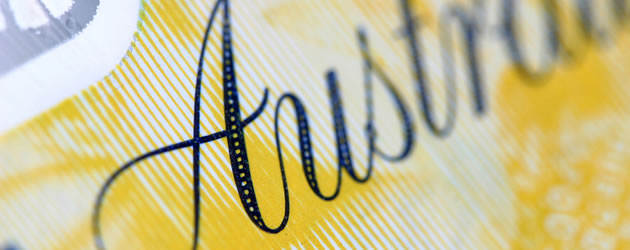- Dovish RBA Policy Statement weighs on AUD exchange rates
- Analysts predict RBA to ease policy further
- EUR climbs despite slowing German construction and retail sales
- EUR/AUD exchange rate forecast to hold gains
Euro (EUR) Exchange Rates Advance as US Dollar Steadies ahead of NFP
The Euro to Australian Dollar (EUR/AUD) exchange rate surged by around 1.8% on Friday afternoon.
Despite the fact domestic data showed that both construction and retail sales in Germany slowed last month from previous figures, the Euro advanced versus most of its major peers. This is mostly the result of trader reluctance to invest heavily in the US Dollar ahead of US Change in Non-Farm Payrolls data.
In addition, falling commodity prices and global stocks volatility has weighed heavily on risk-appetite. With Eurozone growth outpacing both the UK and US in the second-quarter, and with the European Central Bank’s (ECB) ultra-accommodative monetary policy outlook, the single currency’s safe-haven status has been given a boost.
As mentioned above, German data printed comparatively poorly. However, both the German Construction PMI and the German Retail PMI continued to register growth in April. Commenting on the German Retail PMI survey data, Oliver Kolodseike, Economist at Markit said;
‘Today’s PMI numbers signal a note of caution for German retailers, as growth in sales slowed sharply during the month. Moreover, employment levels expanded at the weakest rate since November 2014 and companies grew more cautious about their stock policies, with buying activity and inventories rising only slightly. The data therefore suggest that underlying consumer demand in Germany slowed at the start of the second quarter.’
The Euro to Australian Dollar (EUR/AUD) exchange rate is currently trending in the region of 1.5514.
Australian Dollar (AUD) Exchange Rates Dive despite Positive Construction Data
In what was a surprise to many investors, the Reserve Bank of Australia (RBA) opted to cut the overnight cash rate by 25 basis points to the record-low 1.75% on Tuesday. The decision came days before the publication of the semi-annual RBA Statement on Monetary Policy. The statement was particularly dovish, with the central bank cutting inflation forecasts and amplifying speculation that policymakers will vote to ease monetary conditions further.
The Statement said the board ‘judged that the prospects for sustainable growth in the economy with inflation returning to target over time, would be improved by further easing of monetary policy.’
Such was the negative reaction to the Statement that it completely overshadowed a positive result from the AiG Performance of Construction Index which climbed from 45.2 to 50.8 in April, breaking through the 50 mark that separates growth from contraction.
‘This was the first growth outcome since June 2014 and was accompanied by encouraging reports that higher infrastructure activity was helping to soften the impact of the downturn in mining and heavy industry investment,’ noted the Ai Group.
The Euro to Australian Dollar (EUR/AUD) exchange rate dropped to a low of 1.5242 during Friday’s European session.
EUR/AUD Exchange Rate Forecast: US Data to Provoke Volatility
Given the absence of further Australian and European economic data there is a high chance that the Euro to Australian Dollar (EUR/AUD) exchange rate will hold gains into the weekend, especially given the extent of the current appreciation.
However, there is still potential for EUR/AUD exchange rate volatility this afternoon when US labour market data is published. Both Unemployment Rate and Change in Non-Farm Payrolls data will be likely to cause significant market movement.
The Euro to Australian Dollar (EUR/AUD) exchange rate reached a high of 1.5567 during Friday’s European session.



